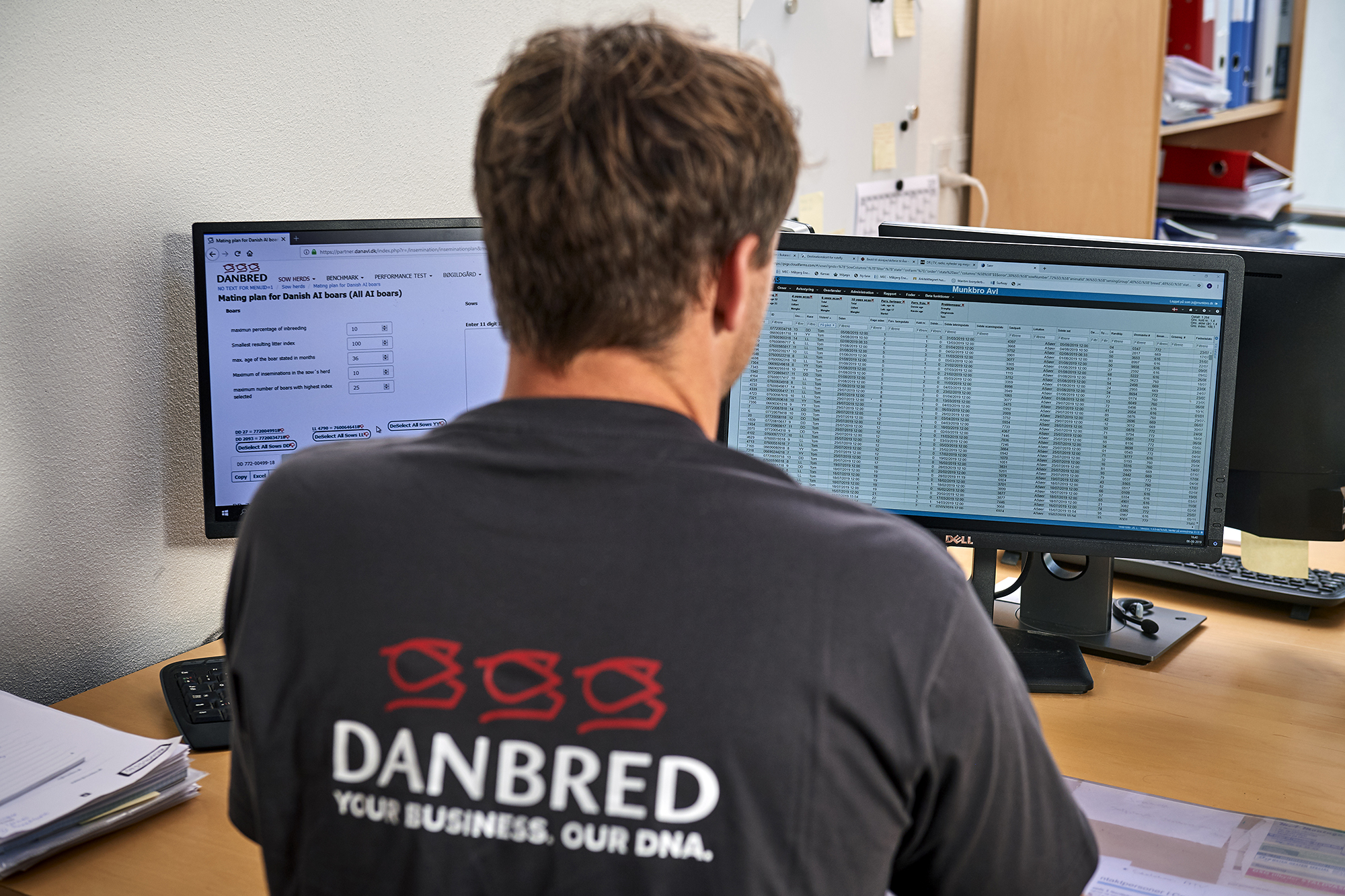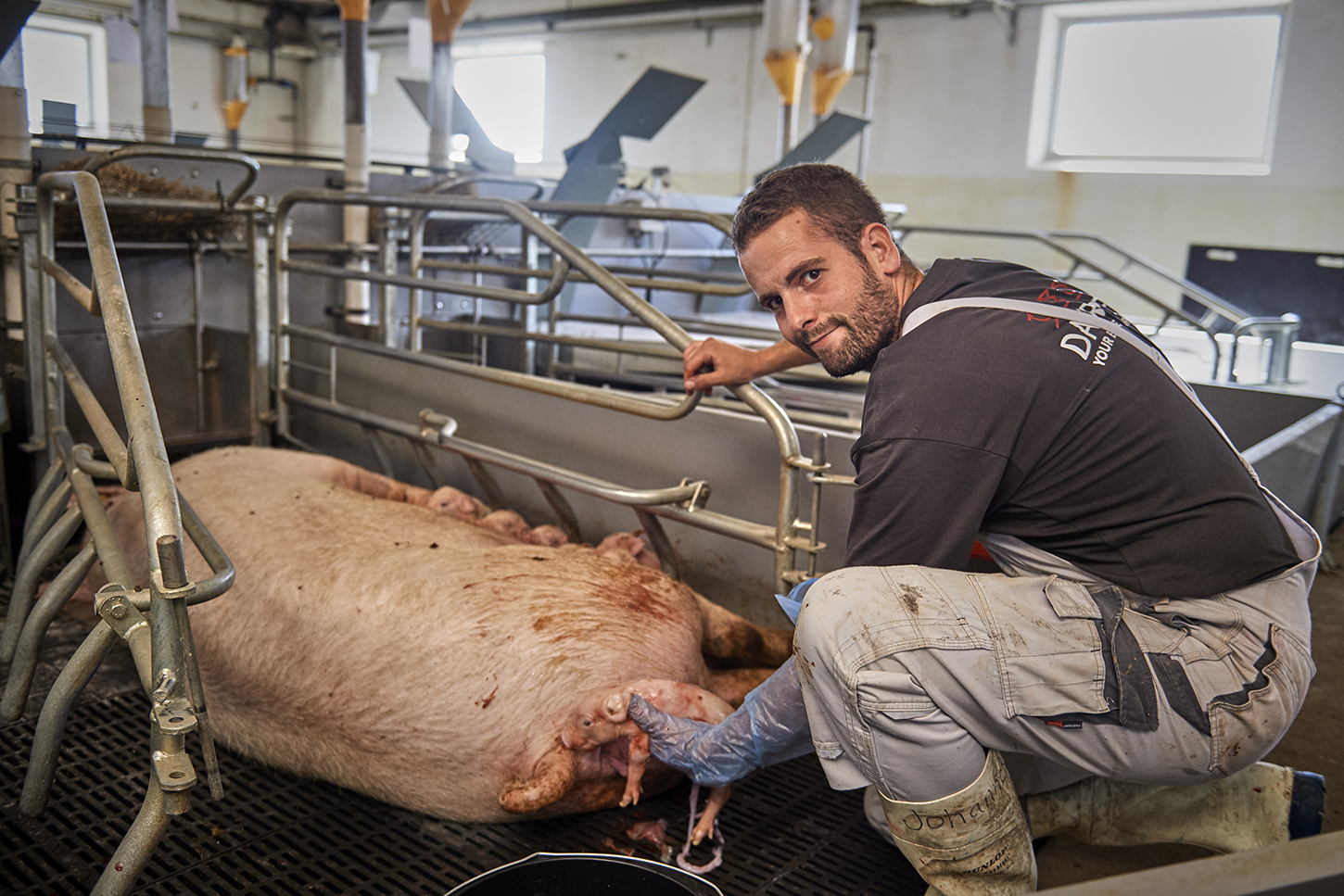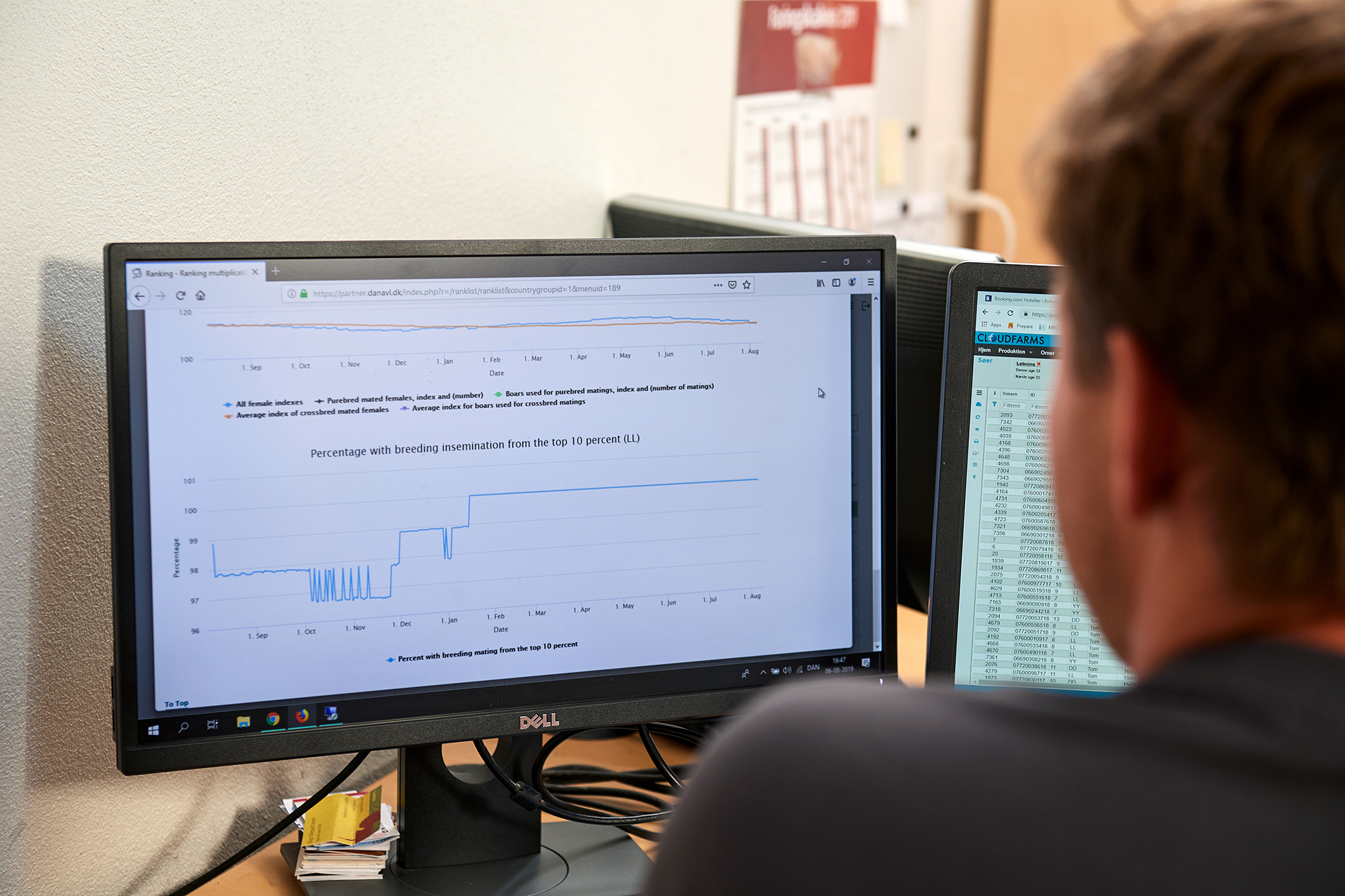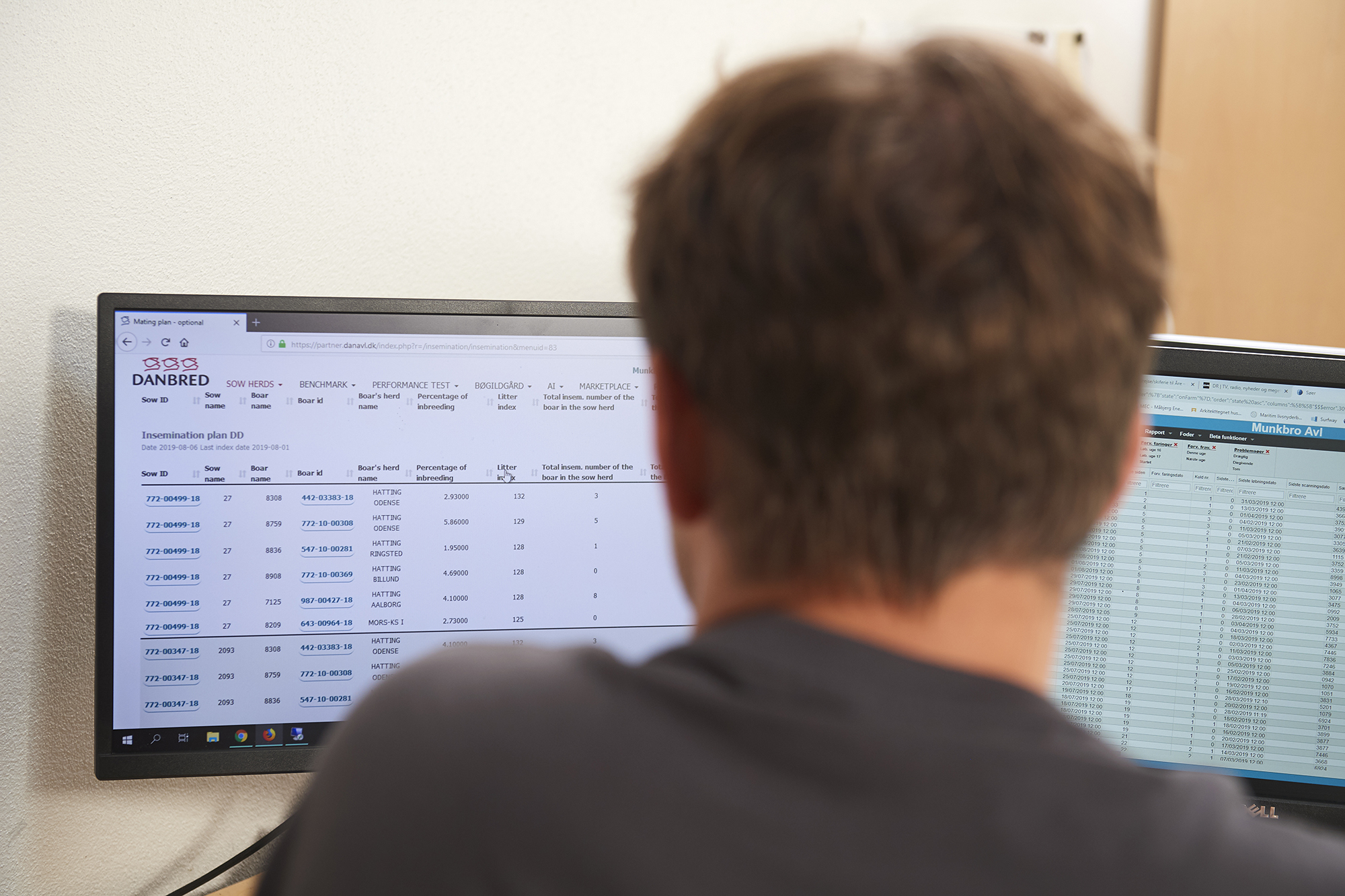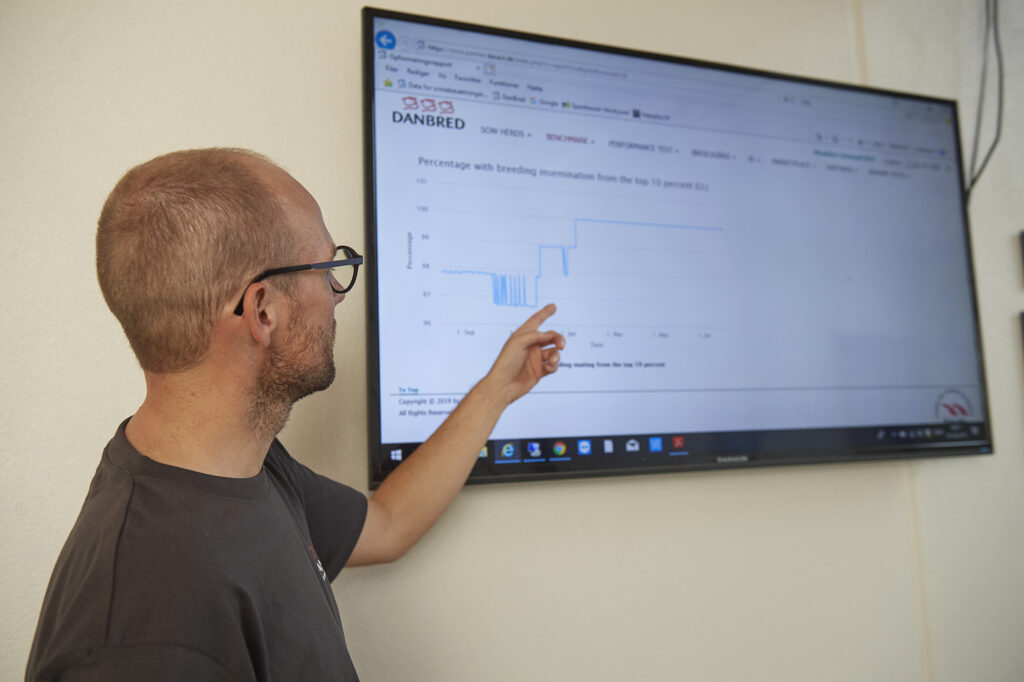Genetic progress
Balanced breeding – the basis for high-quality breeding animals
For decades DanBred has worked with balanced breeding and documented its genetic progress in pig production worldwide. This genetic progress is primarily generated in DanBreds nucleus herds and is available throughout the supply chain, also known as the breeding pyramid. Genetic progress is distributed by various channels down the pyramid, either by buying live breeding animals and/or buying semen for the production of breeding animals.
The speed at which genetic progress is implemented, access to breeding materials and hence the value of the genetic progress throughout the pyramid, are highly dependent on the choice of distribution channels, choice of breeding strategy and of course the individual market situation. But in all cases, the understanding of the genetic progress itself, and the value it offers to the individual herd is key in making the correct choice.
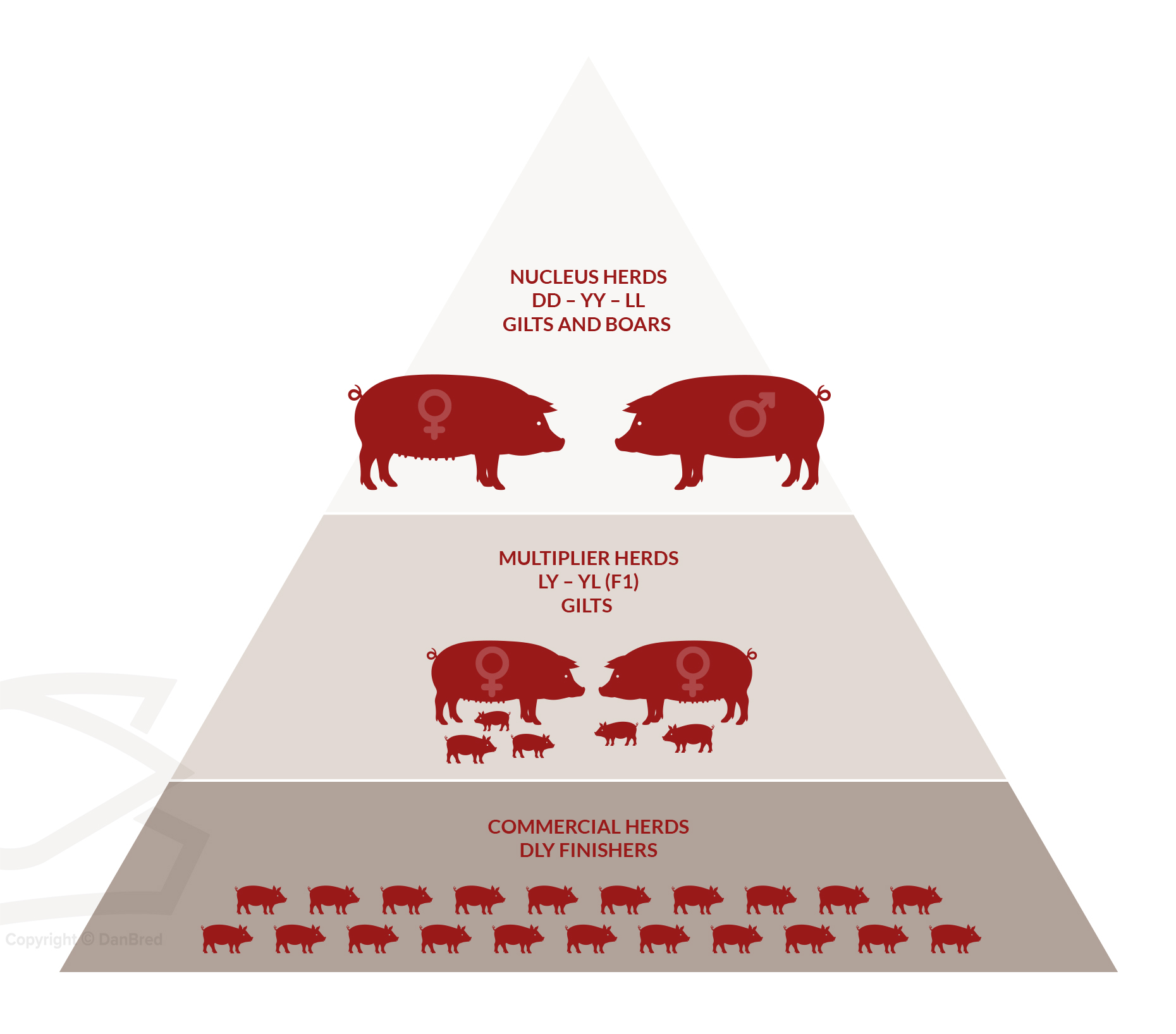
Breeder’s equation – Genetic progress in practice
In practice, genetic progress is generated through the optimisation of various parameters with significant influence in general breeding. It can be explained rather simplified, by using the ‘Breeders Equation’.

i: Selection intensity (a large number of performance-tested animals increases selection intensity)
r: Quality and accuracy of the performance test (heritability of performance – and the amount of data)
a: Genetic variation
y: Generation interval (age at first farrowing)
Selection intensity
The number of performance-tested animals within the breeding population determines the number of breeding candidates, and thus the opportunity to select the very best animals. It is imperative that a wide variety of animals are tested, to ensure that there is enough variation, in order to make the final selection of the next generation.
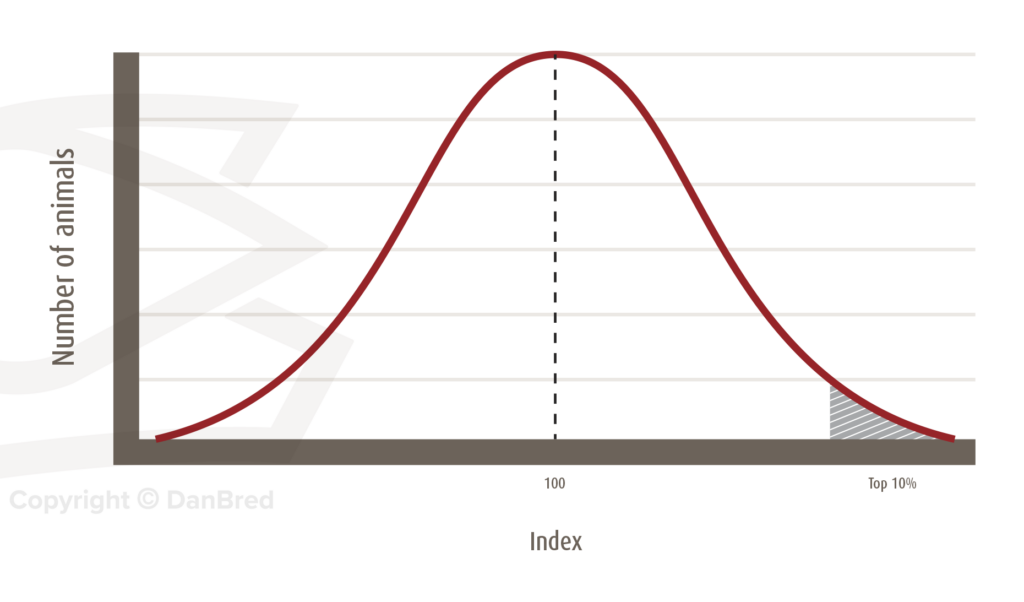
Quality and accuracy of the performance test
Heritability and quality within the performance test are essential for the selection of animals for the next generation, as this is the baseline of the index. The quality and accuracy of the performance test have a direct impact on heritability. A low environmental impact from management, seasonal changes and so on, as well as stability in the production, generates a higher heritability.
A high heritability is achieved by:
- Stable and uniform testing conditions and routines – e.g., uniform weighing of pigs in the trial
- High data discipline and careful registration
- Uniform care and feeding (management protocols)
- Stable health status.
More than 100,000 breeding candidates are performance tested in the DanBred breeding system every year. The breeding candidates are from three populations, where the amount of phenotypic and genomic data contribute to the annual genetic progress generated in all traits included in the DanBred breeding goal.
|
|
|
The closer we can get to the true genetic potential of the animals, the higher the accuracy and genetic progress can be generated. In other words, a high level of accuracy will contribute further to the optimal selection of the proper animals for the next generation.
|
|
|
Genetic variation
Only hereditary traits with genetic variation within a population can be improved through breeding. This means, amongst other things, that all animals must be able to show their full genetic potential. It is crucial that all animals are given the opportunity to perform to their highest potential, for e.g. through ad libitum feeding throughout the trial. Feed must also be of the highest quality, containing all necessary nutrients and be beneficial for maximising growth potential, even in the fastest-growing animal. If just one component is lacking in the feed, it will prevent the fastest-growing animals from showing their full genetic potential – the potential is present, but does not show, and selection will be inaccurate.
|
|
|
Genetic variation is thus fundamental in generating as high genetic progress as possible, and essential to make the correct selection of future breeding candidates.
Generation interval
Provided that all other parameters in the ‘Breeders Equation’ (I, r & a) have been optimised, it is vital that the performance-tested animals are then entered into production to ensure that the genetic potential of the candidates is utilised.
The generation interval is defined as the average age of the parents at the birth of the offspring, or in other words the age of the animals at first farrowing (or mount for boars) – the younger the animals are, the lower generation interval we will have thus increasing the genetic progress.
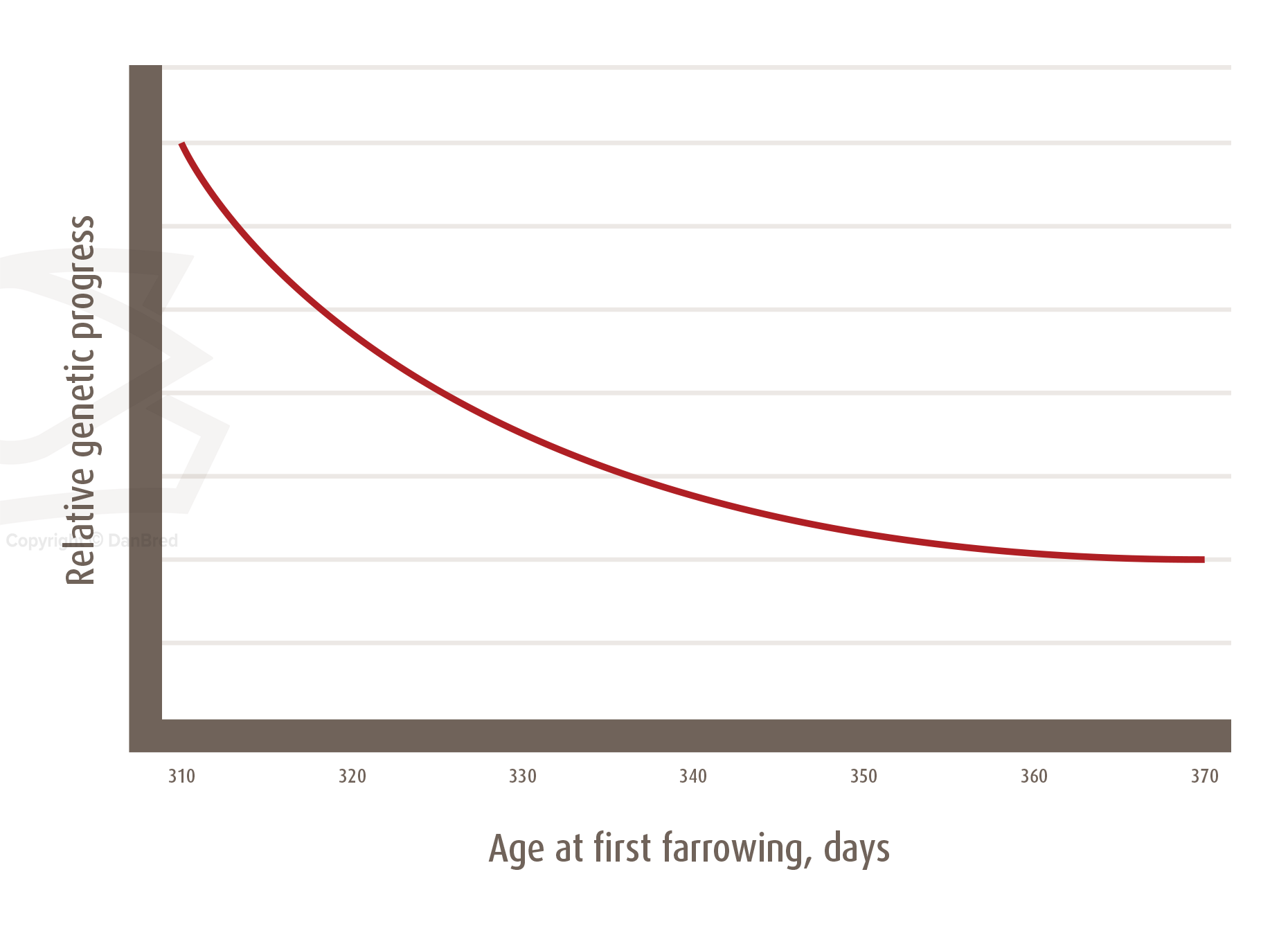
Both correct selection and the time at which selection is made are both crucial to generating genetic progress and form the basis of the quality delivered from the herds included in DanBreds breeding program. This genetic progress applies to both DanBred gilts and boars.
|
|
|
The DanBred index
On a weekly basis, all breeding animals registered in DanBreds databank are included in the index calculation. The index is an expression of the animals’ expected economic production value when all traits from the DanBred breeding goals are assessed together – or in other words, the animals’ genetic potential. This means that the higher the index, the greater the genetic potential when looking at productivity from an economical point of view.
|
|
|
The entire DanBred breeding population is standardised (on a weekly basis) to an average index of 100 – meaning that the active breeding population always has the same average and variation. Because of this standardisation and the constant genetic progress, it is expectable for an animal’s index to decrease over time. The index of two active breeding animals, regardless of gender and age, can be compared at all times when they are from the same population (e.g. DanBred Landrace) and the index is calculated at the same time. However, it is not possible to compare animal indexes between populations or indexes calculated at different times.
The index for all breeding animals is recalculated on a weekly basis, where standardisation and all of the newest results from the performance tests and genomic information are included.
The index is calculated based on state-of-the-art customised genetic-statistical models and methods, containing data from:
- Results from the performance tests – both on-farm tests and Bøgildgård
- Relationship information
- Genomic information
The DanBred index is calculated by summarising the product of the sub-indexes (breeding values) and their respective economical values.
Each sub-index indicates the animals expected hereditary facility for that specific trait in the breeding goal. The sub-index is expressed as the deviation from the average within the population. Therefore it must be seen as an assessment of each animal’s genetic potential compared to the population average. However, the combined index should always be the foundation when selecting breeding candidates, since selection based on sub-indexes alone will be suboptimal from a production economic perspective.
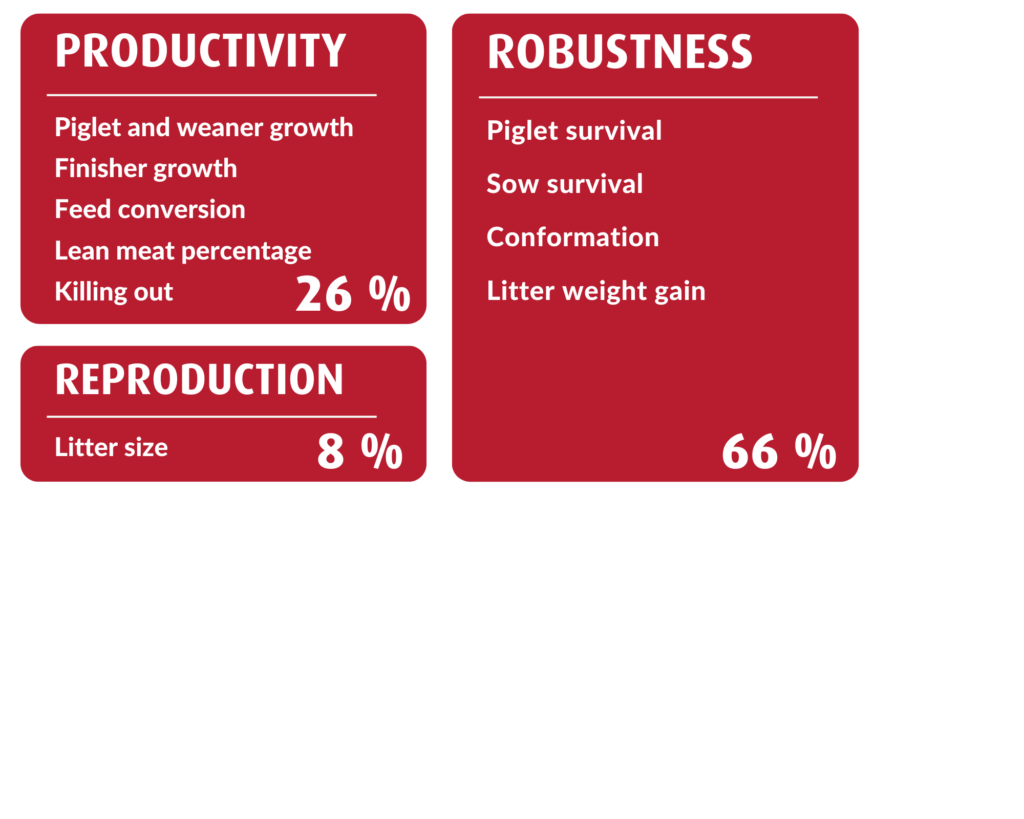 |
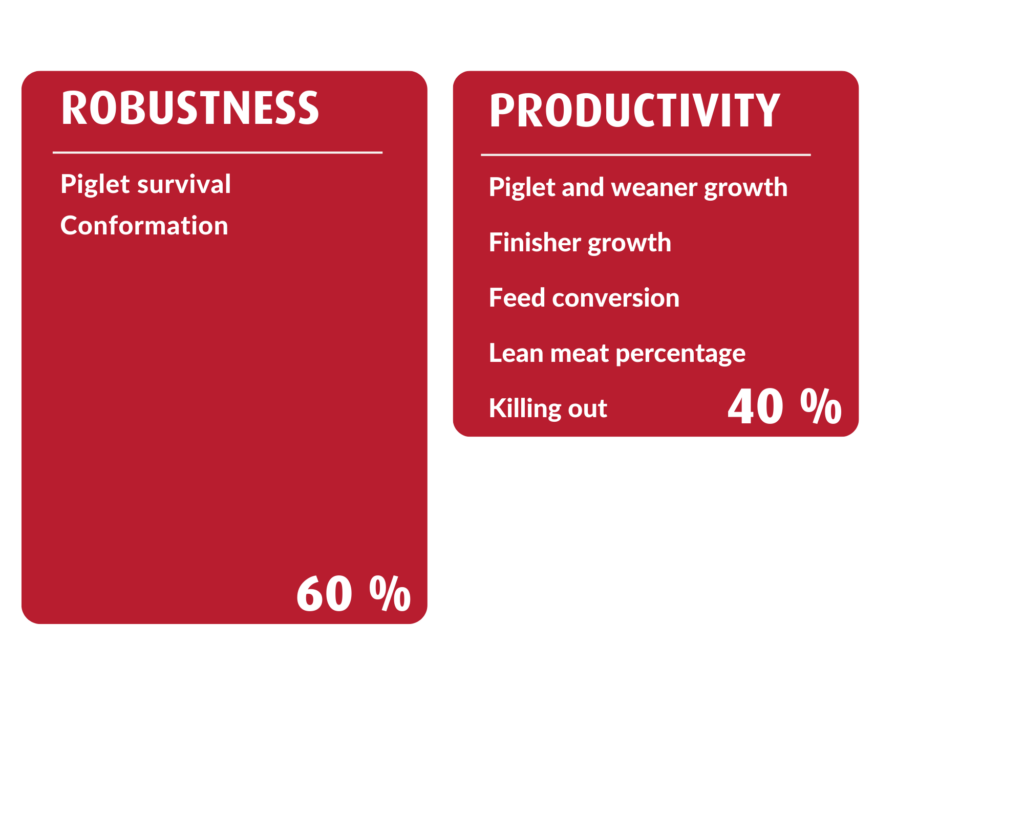 |
*The traits of the breeding goal and their contribution in DanBred Landrace & DanBred Yorkshire on the left side as well as DanBred Duroc on the right side.
Both the animals’ index and sub-indexes can be viewed at any time on the DanBred Partner Site. This site contains both the latest data as well as historic data. This is available at all times for both DanBred herds, partners, and customers – the latest data is available and ready to be shared with our partners immediately after the weekly index calculation – every Thursday morning.

To ensure the best possible genetic potential and performance within the herds, the index is used as the basis for selecting the animals for the next generation. Gilts will often have a higher index level than older sows, so selecting gilts as a baseline will in most cases ensure a maximised genetic performance and economic progress within the herd.
|
|
|
By always selecting sows/gilts with the highest index available within the herd, and optimally, higher than the population average (100), it is possible to gain direct access to DanBreds’ genetic progress. When sows/gilts with an index higher than the herd’s average are selected, genetic development within the herd is ensured and hence the highest economical production value.
Utilising the genetic progress and potential
It is essential to exploit the full potential and advantages given within the DanBred breeding program. The benefits and possibilities within the system should be implemented to the fullest extent possible, and should not be a compromise.
Use the DanBred index to make smart choices: The index expresses the animals’ genetic potential and economic production value. It can be seen as a description of the content, which can be used in the ranking of the animals within the same population and hence make active and deliberate choices at the time of selection. DanBred always uses state-of-the-art methods and models in the index calculation – and is progressing with the methods applied over time. The herd index level determines the rate at which the genetic progress generated will be beneficial within the herd and the extent to which the economical advantages will follow.
DanBred offers various tools and opportunities to ensure the correct genetic foundation within the herd.
|
|
|
In addition, there are different management protocols that easily ensure quick and efficient implementation in everyday routines:
- Select the best sows and gilts for the next generation à use herd lists during selection.
- Maintain optimal genetic variation à if littermates are selected, different boars must be used to accommodate genetic variation and ensure a safety margin.
- Use DanBred semen with the highest index available.
- Ensure significant variation in families by using many different boars.
It is also important to monitor whether the index level is maintained over time, and hence not decreasing, thus ensuring optimal implementation of genetic progress within the herd.
|
|
|



